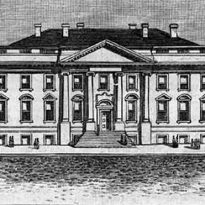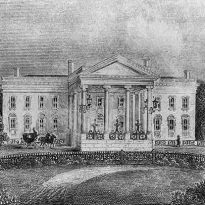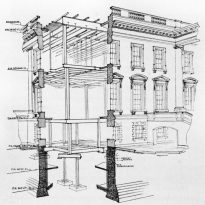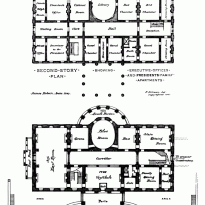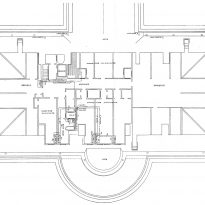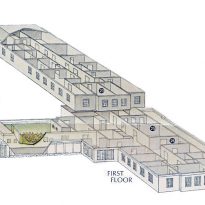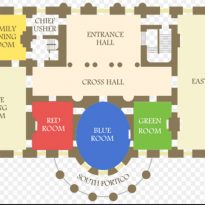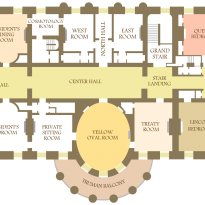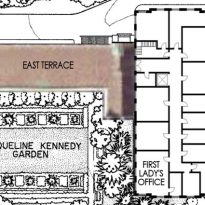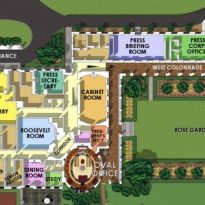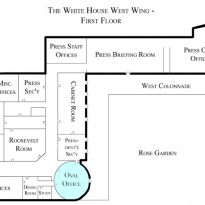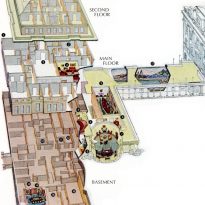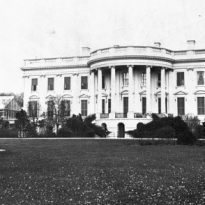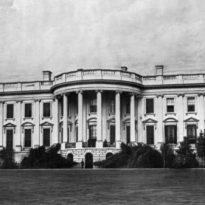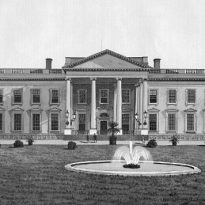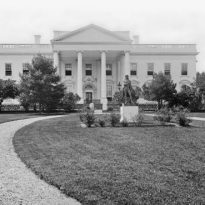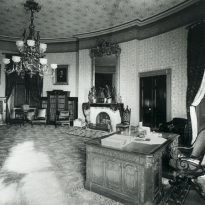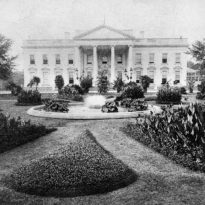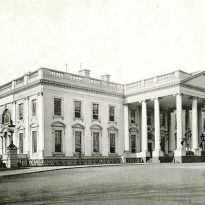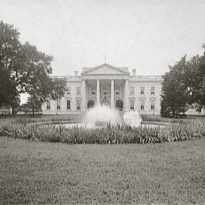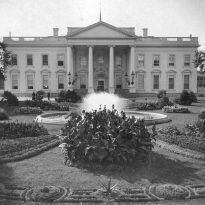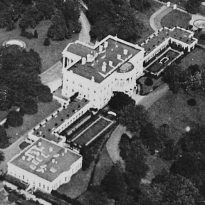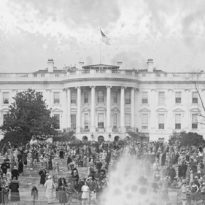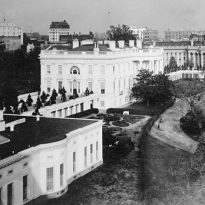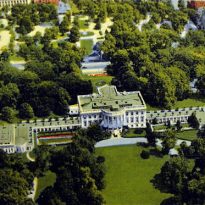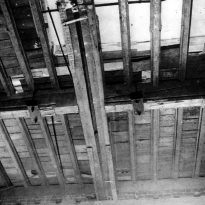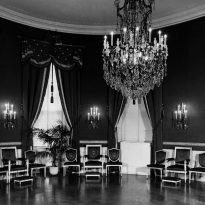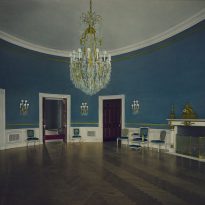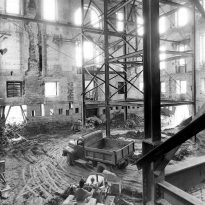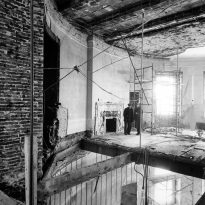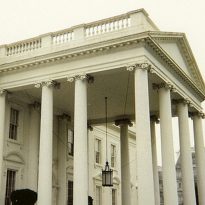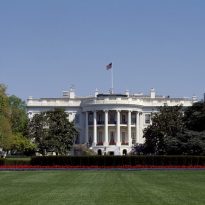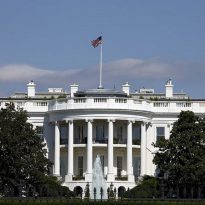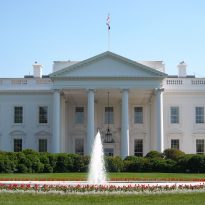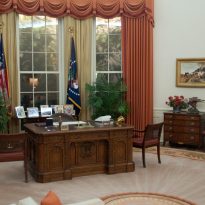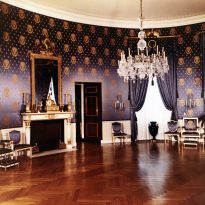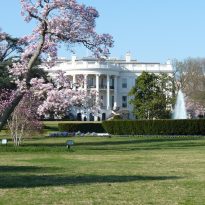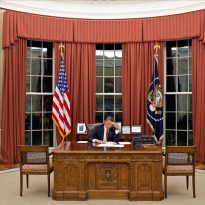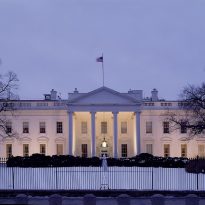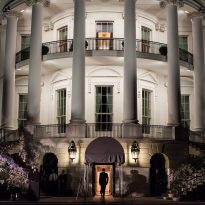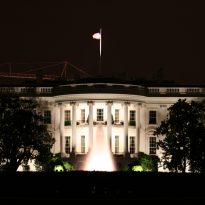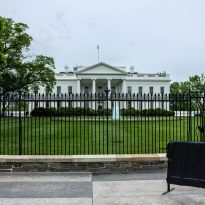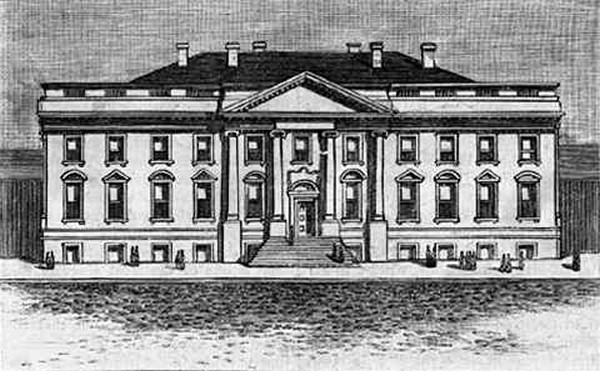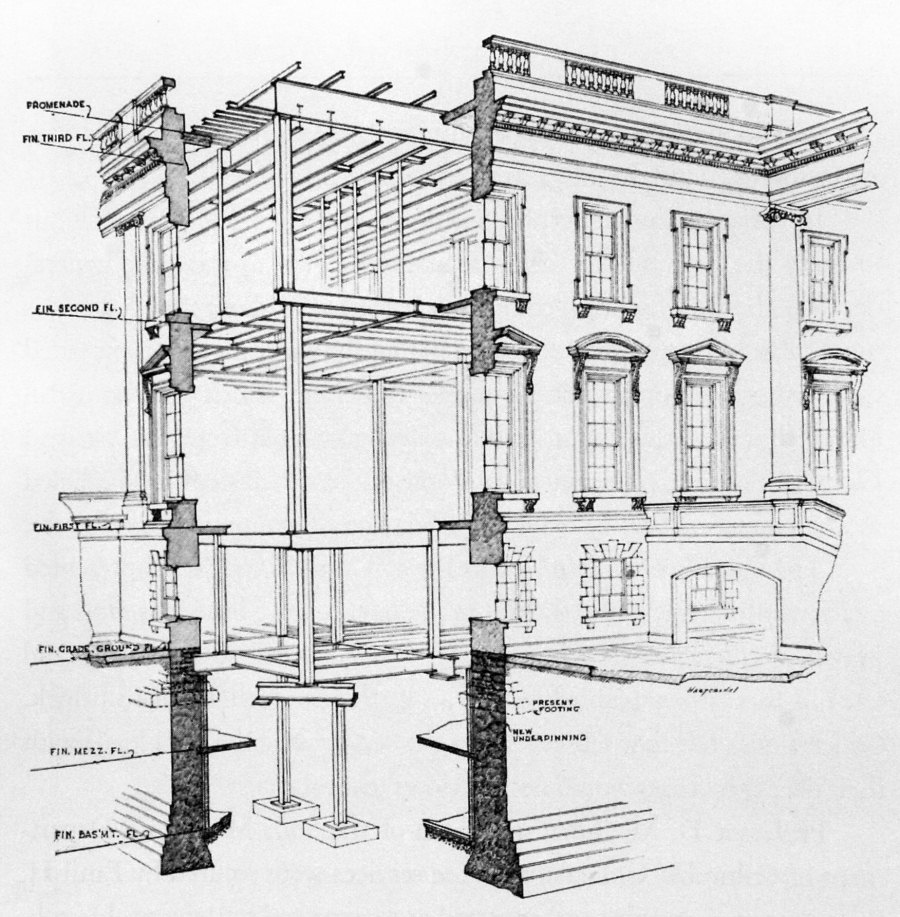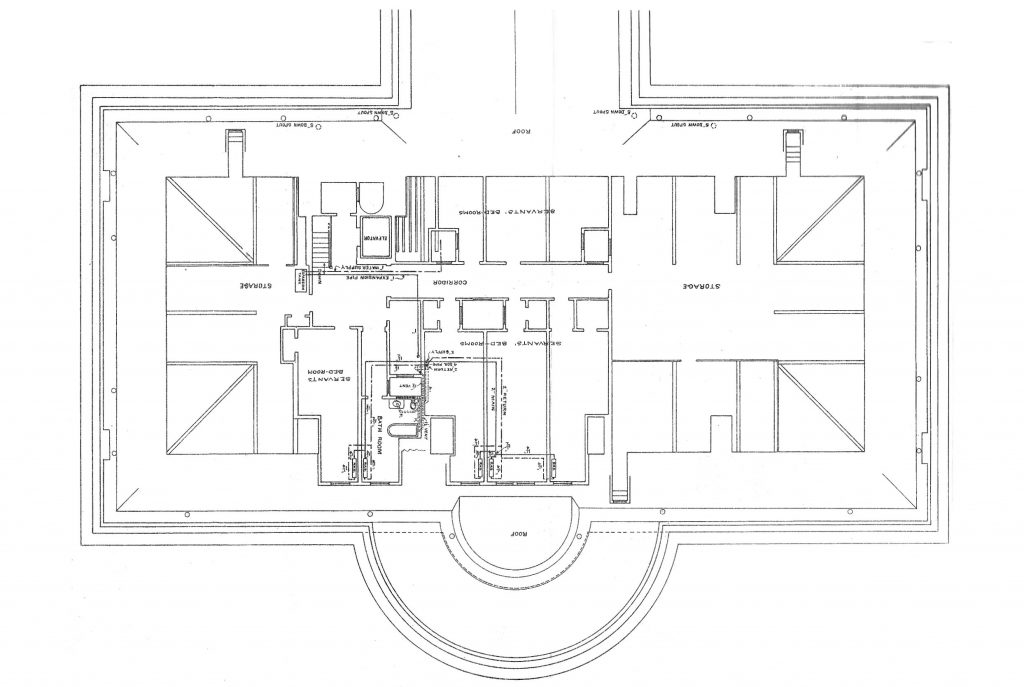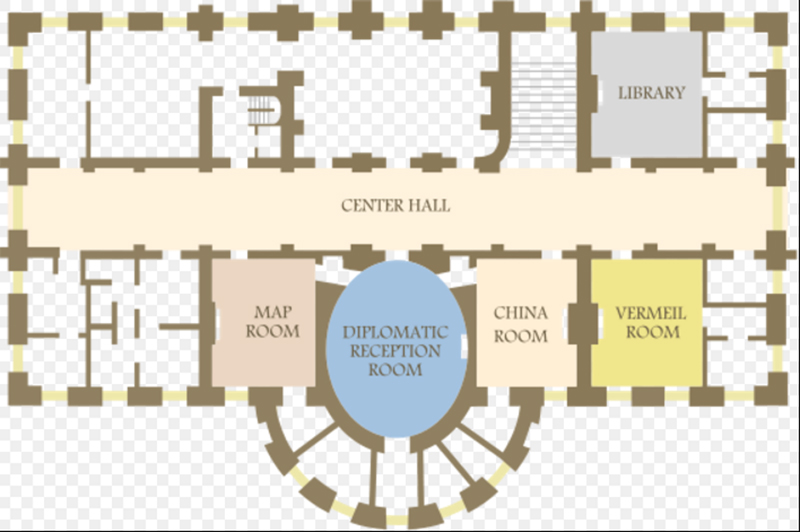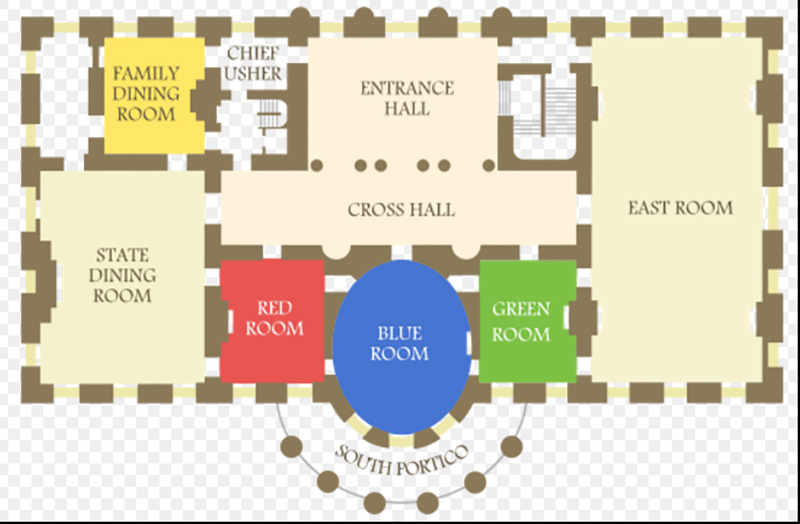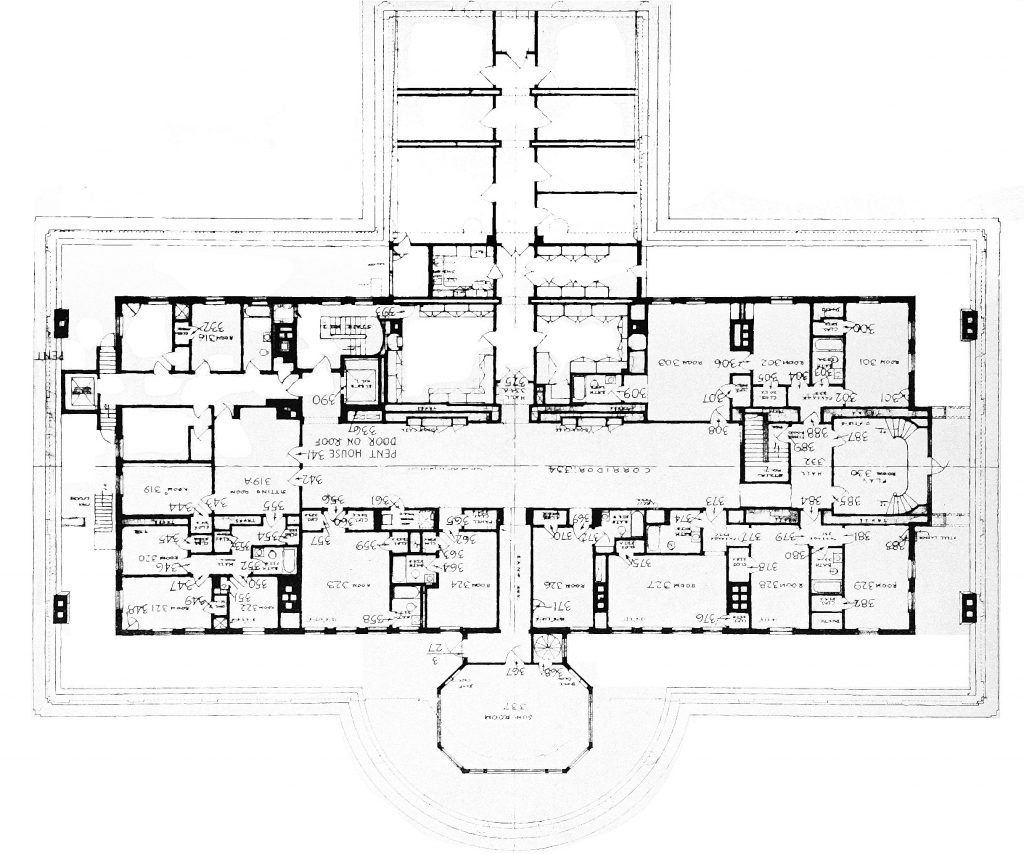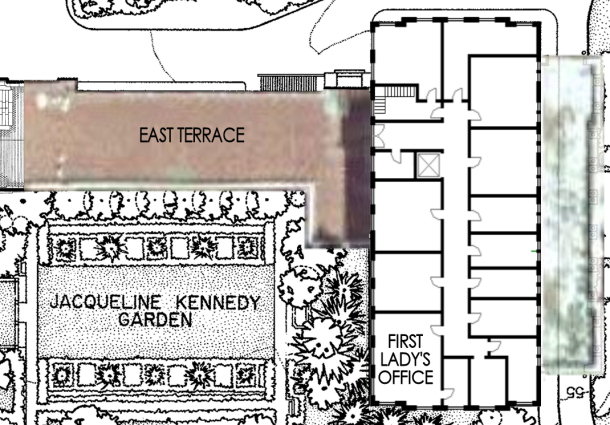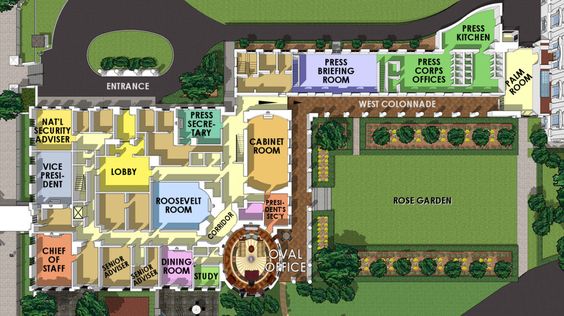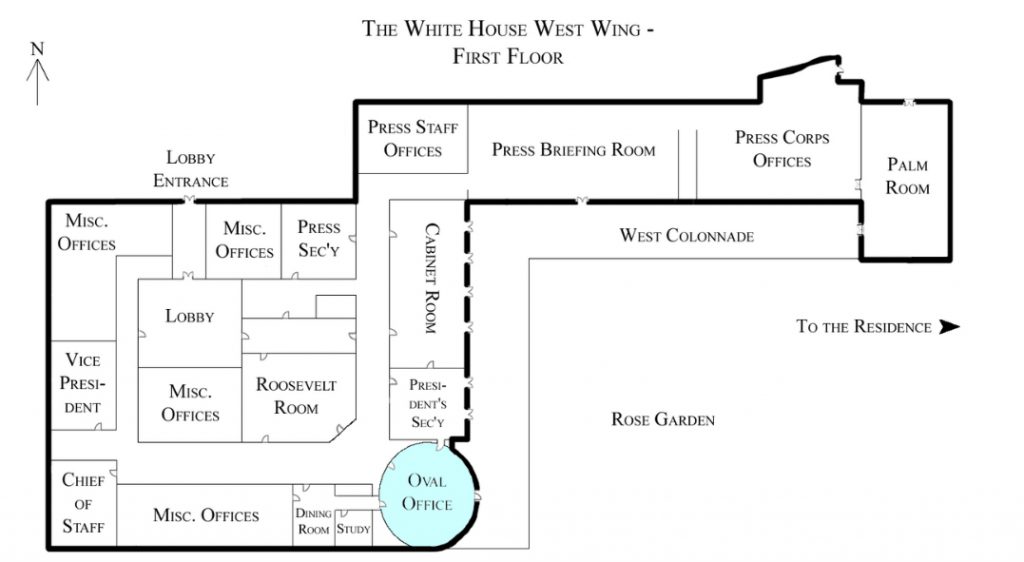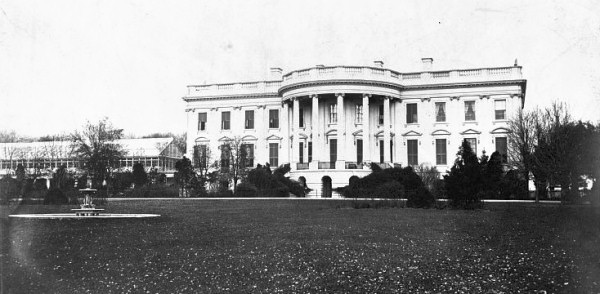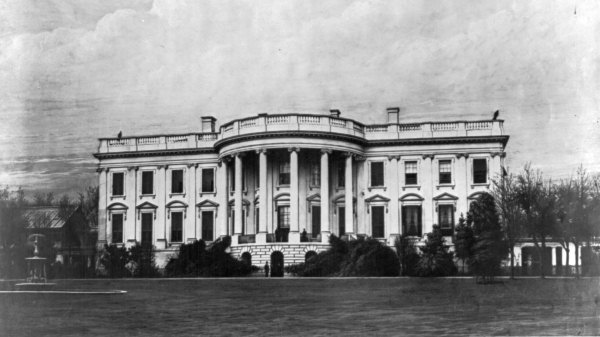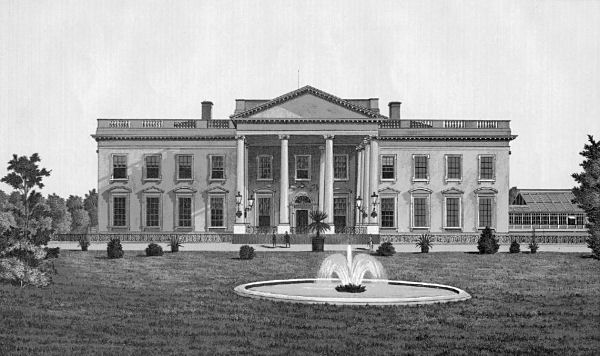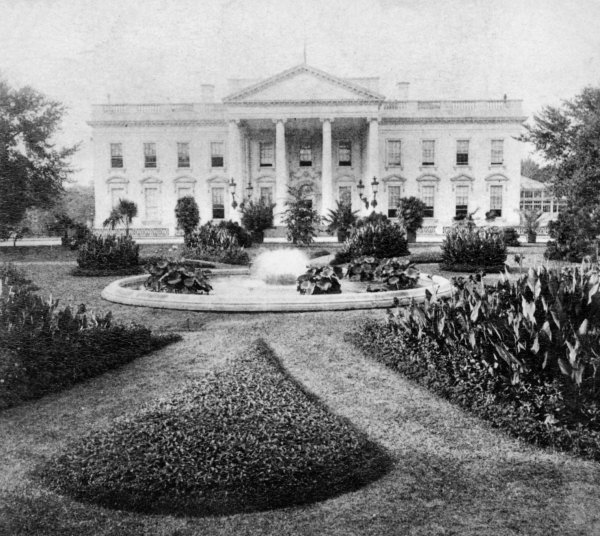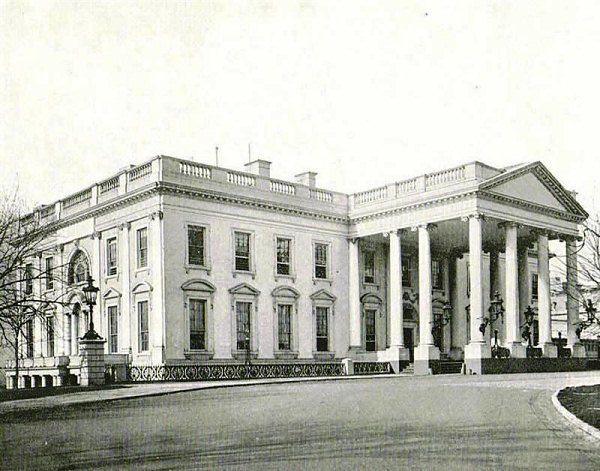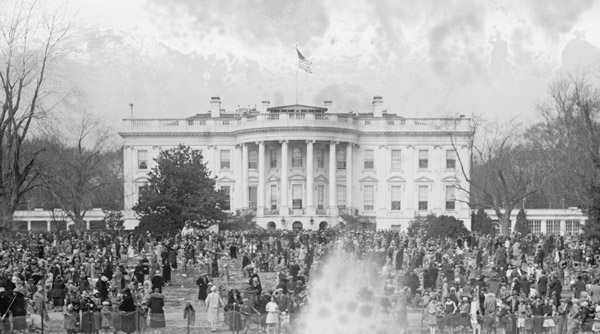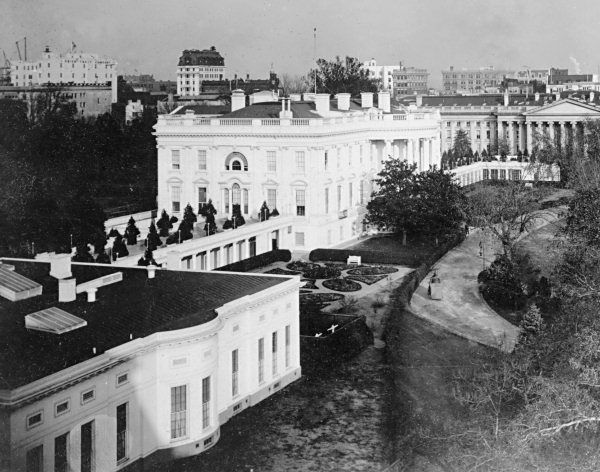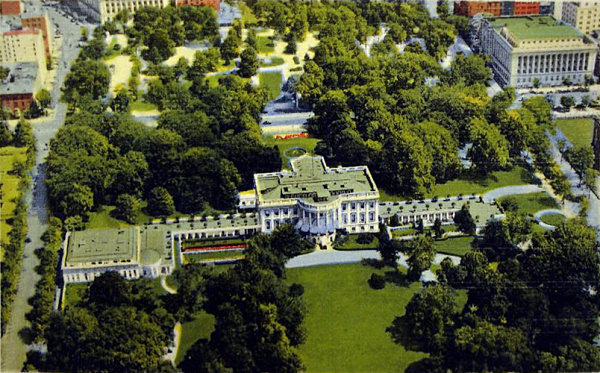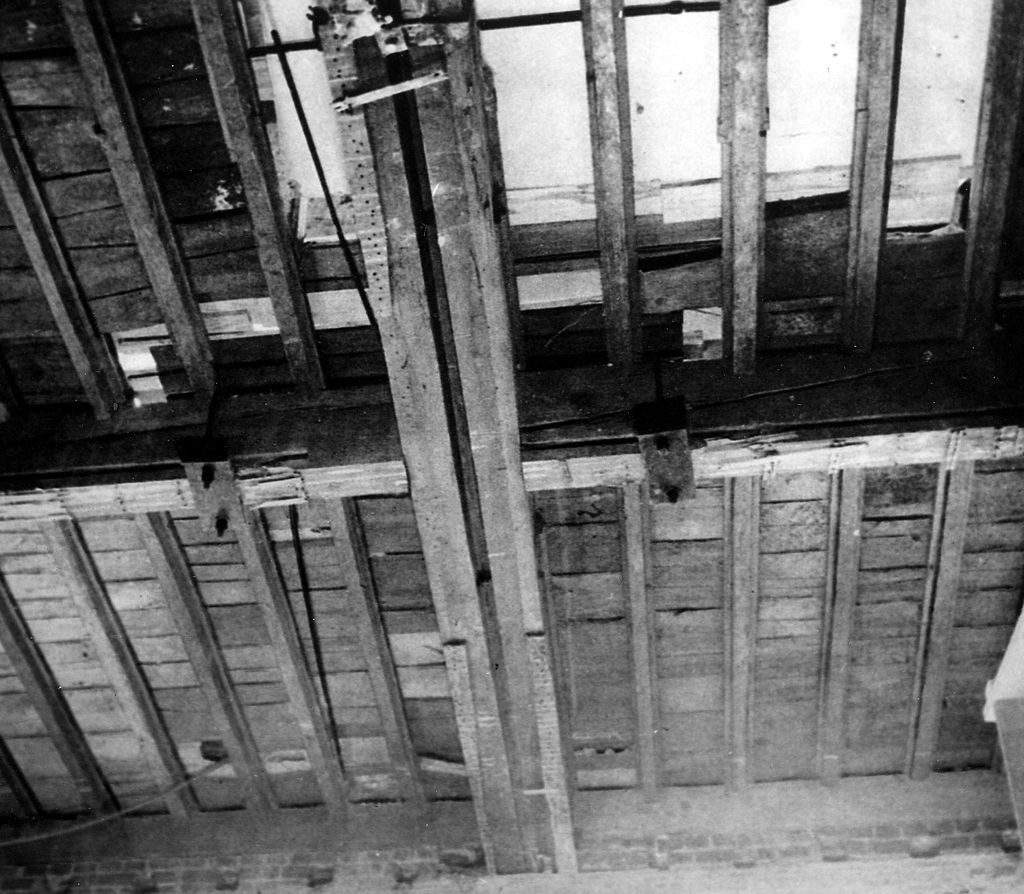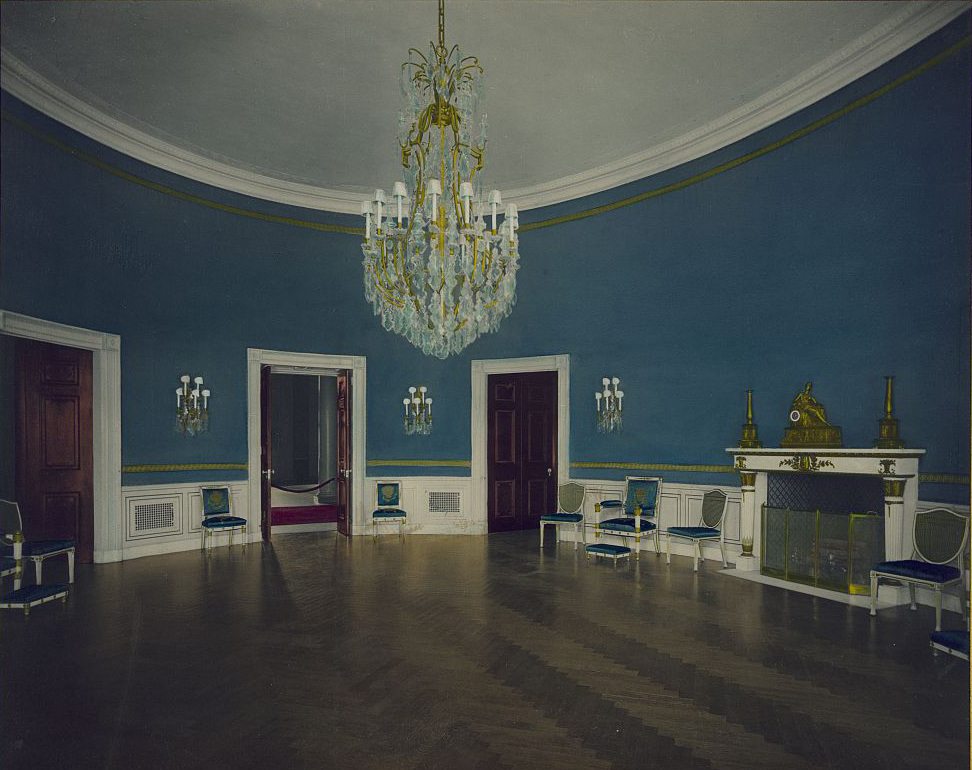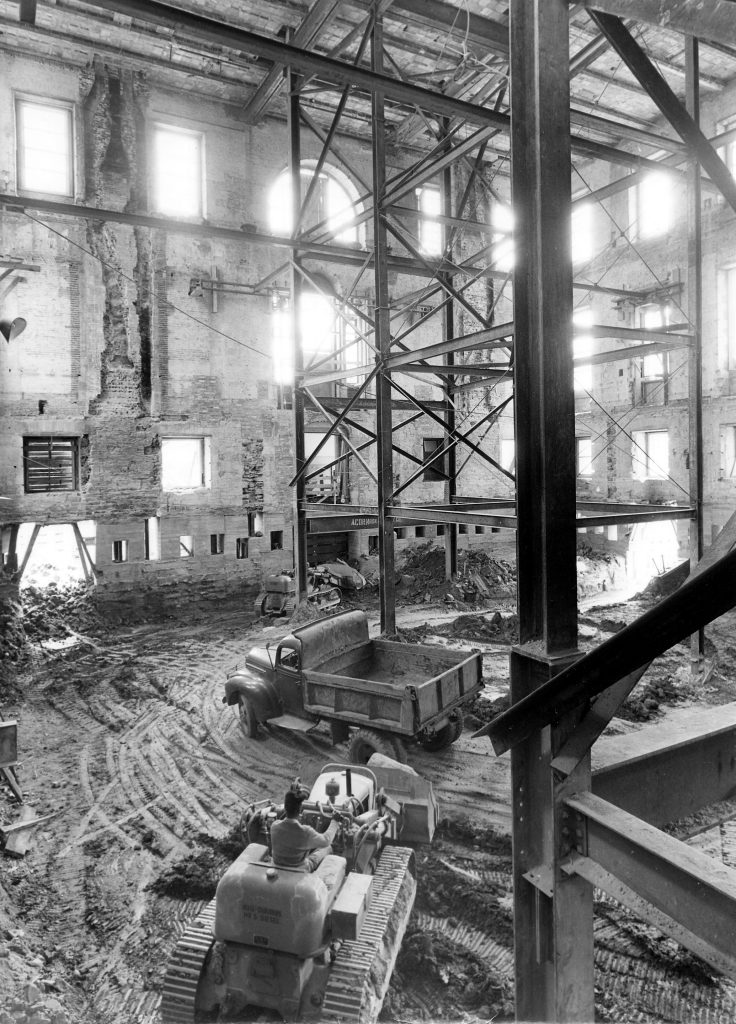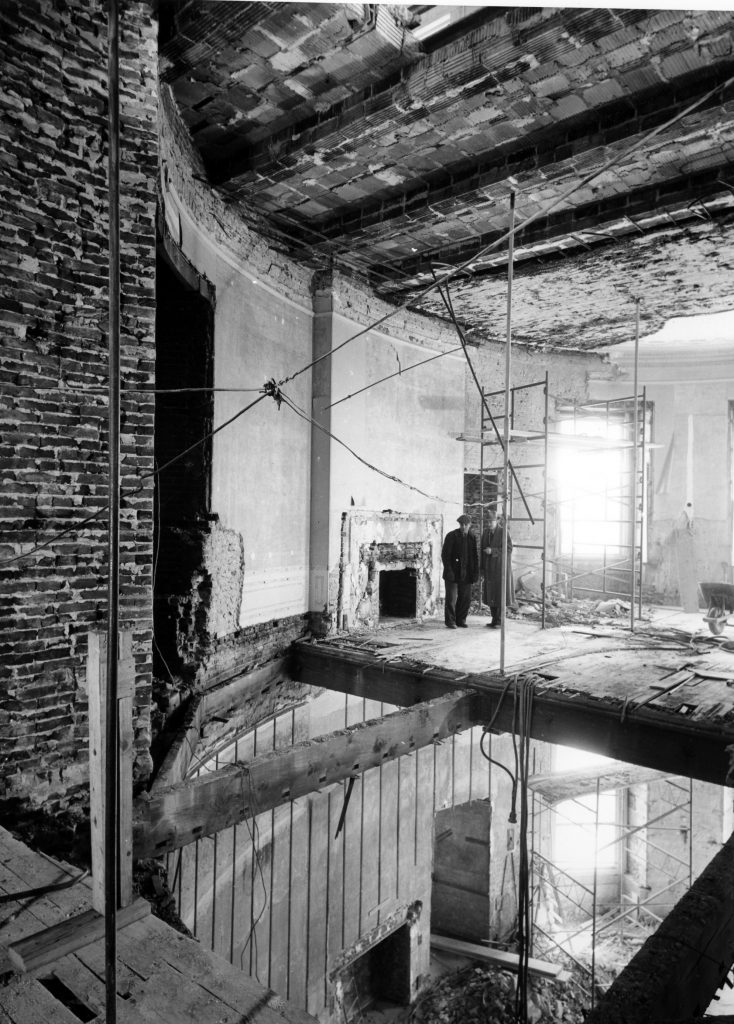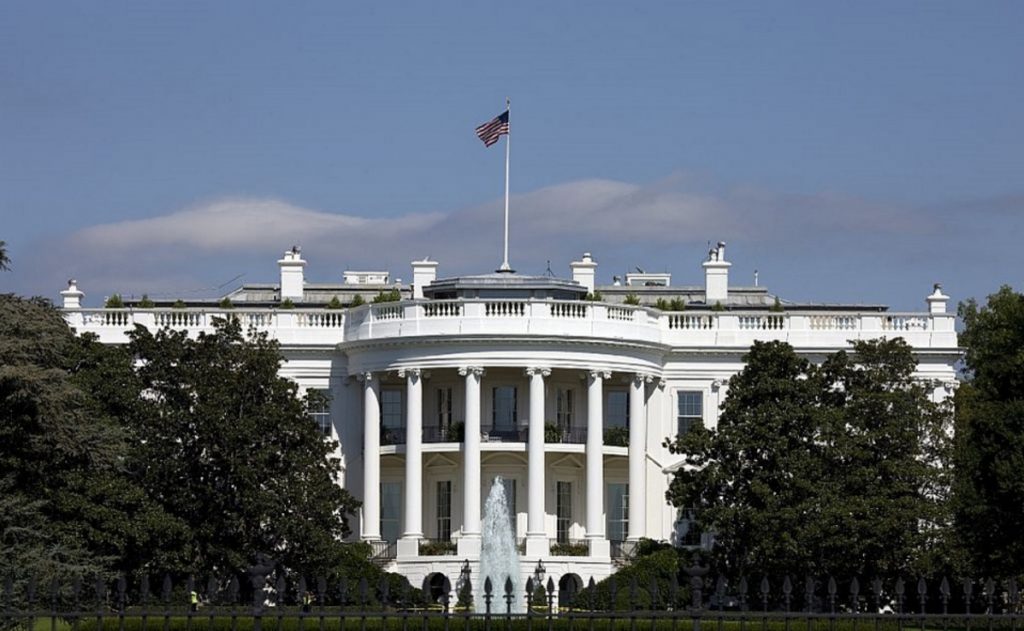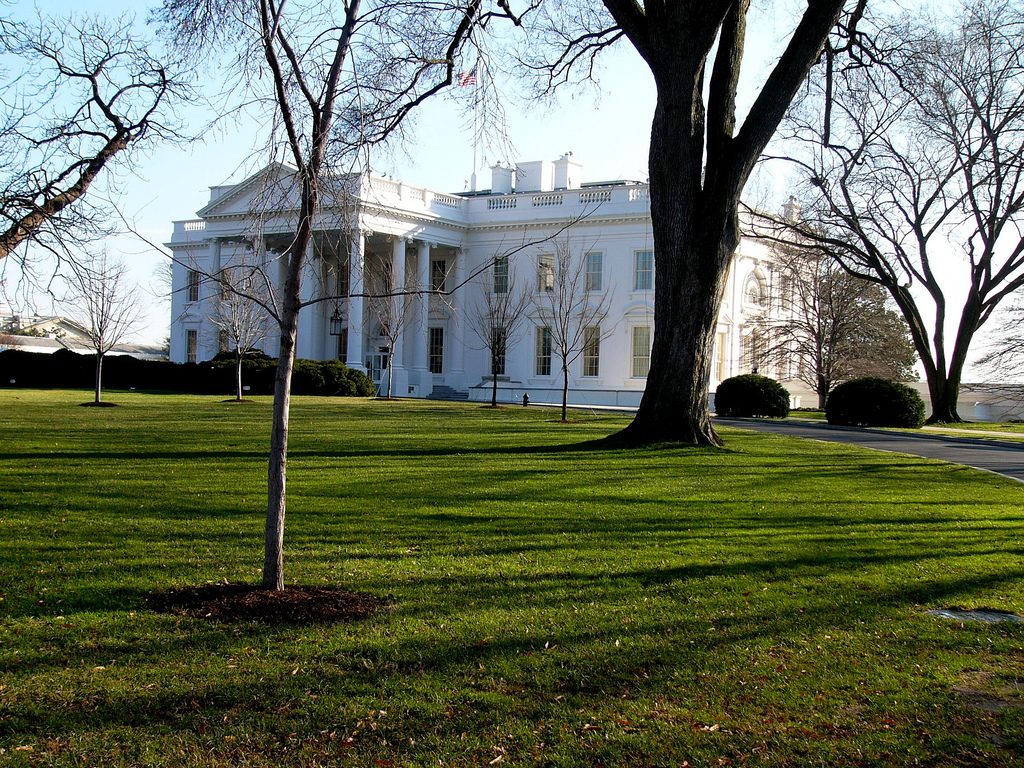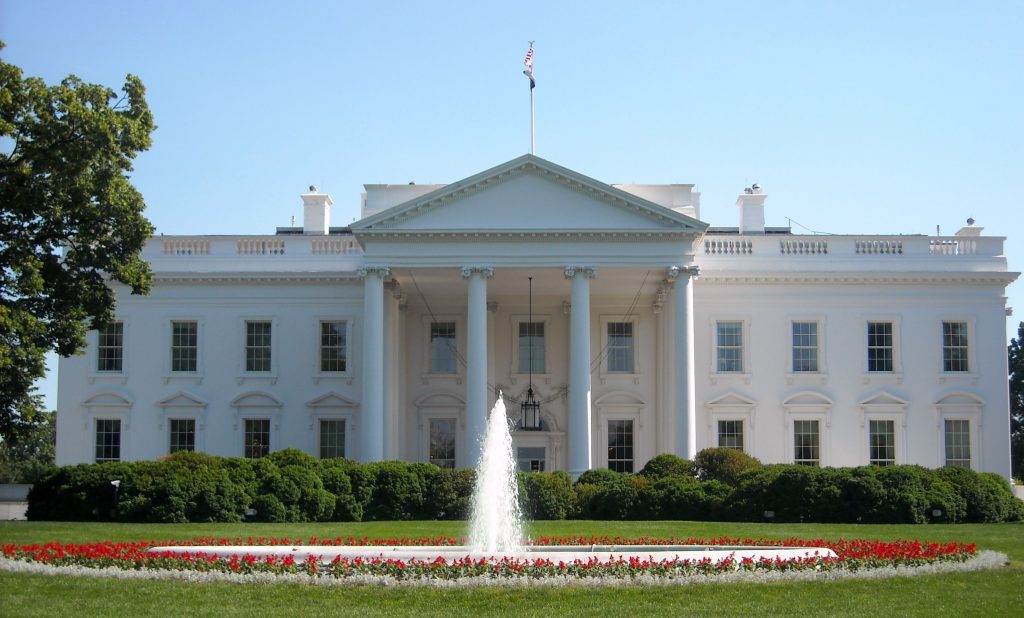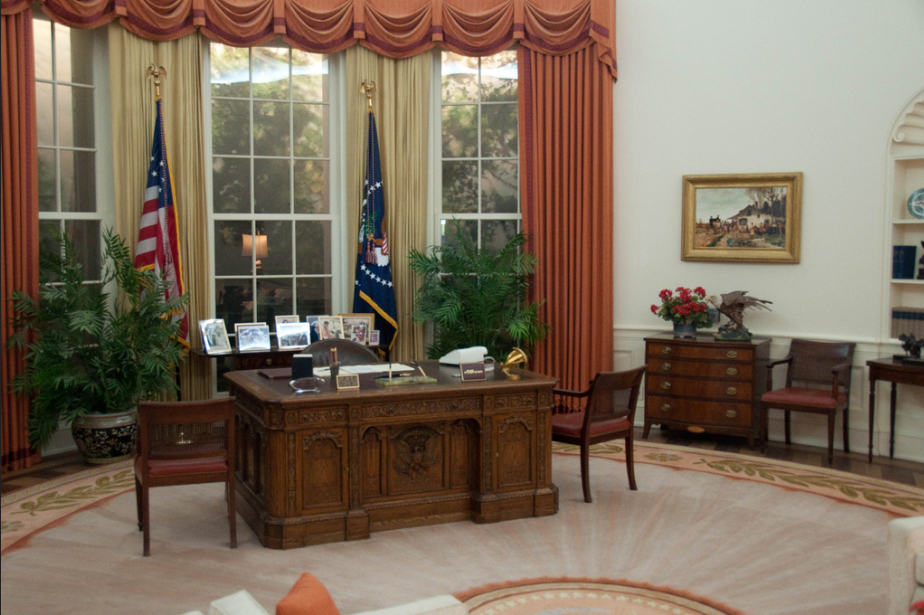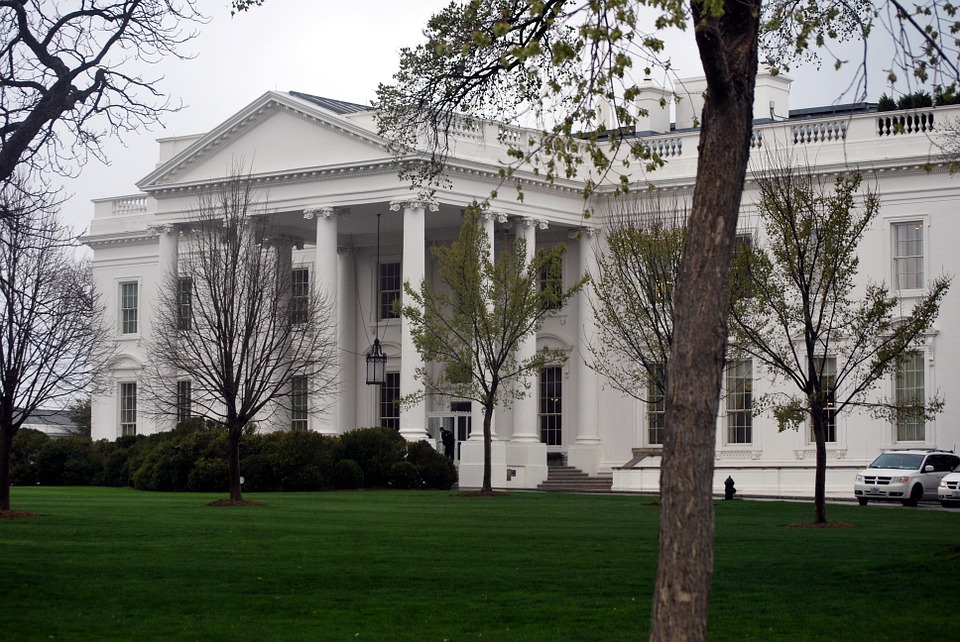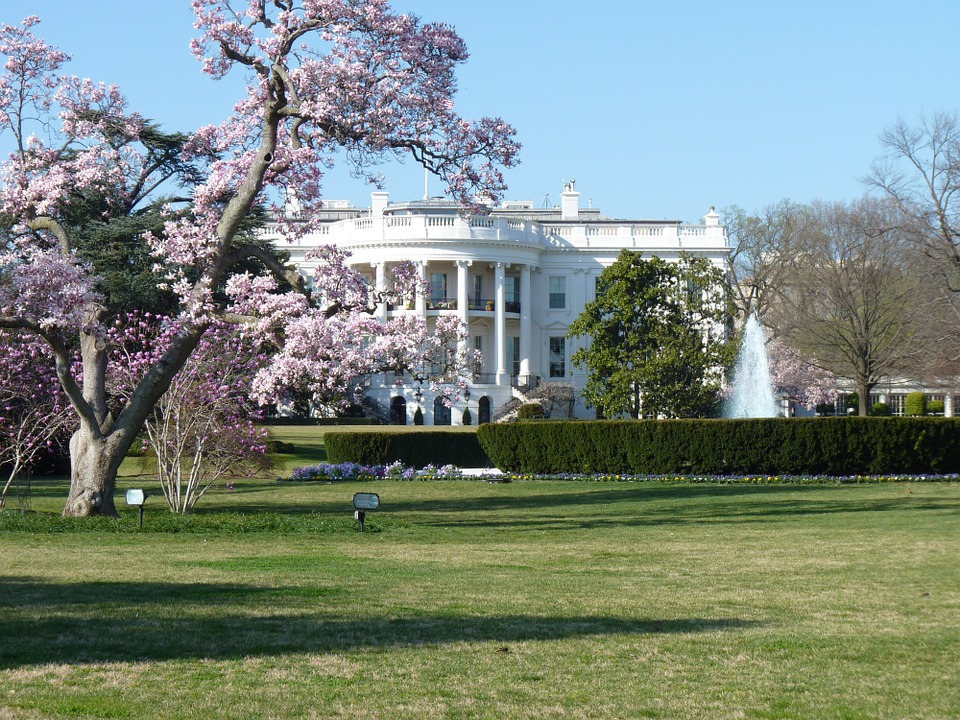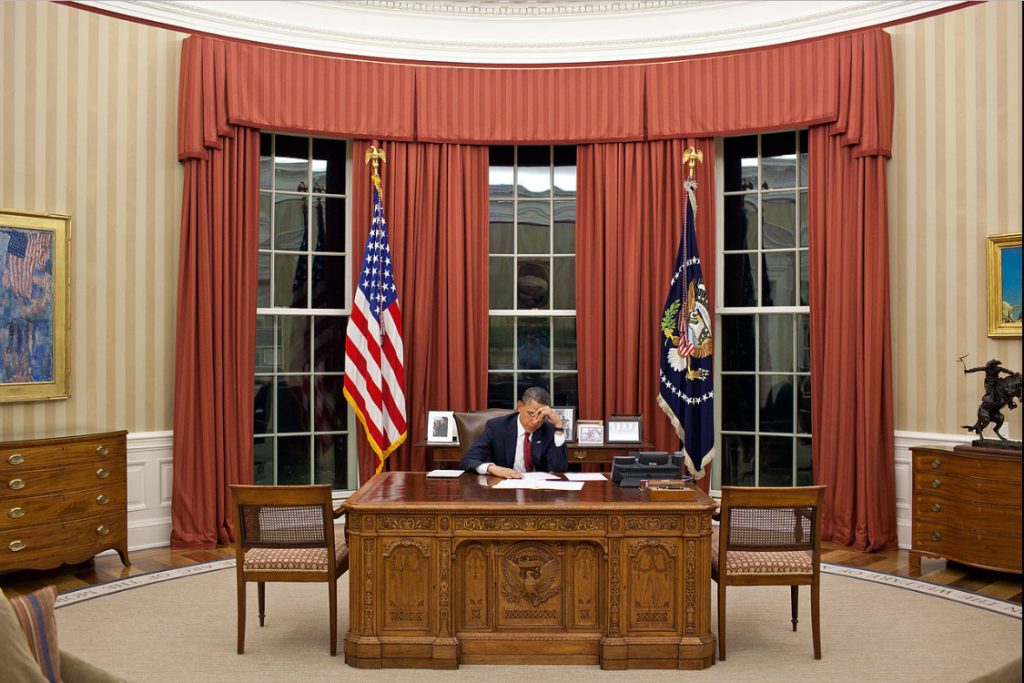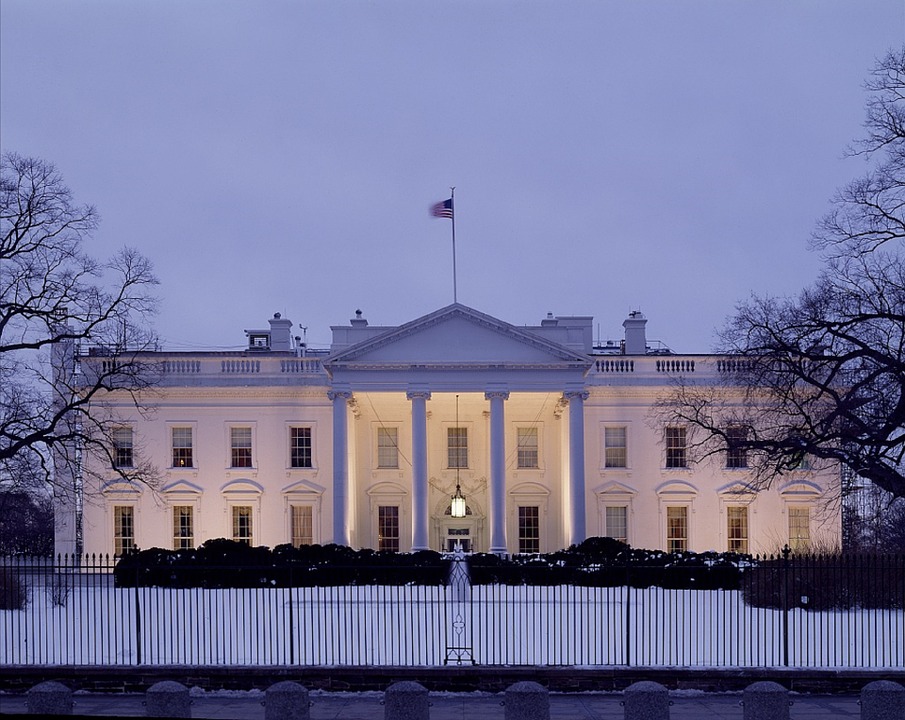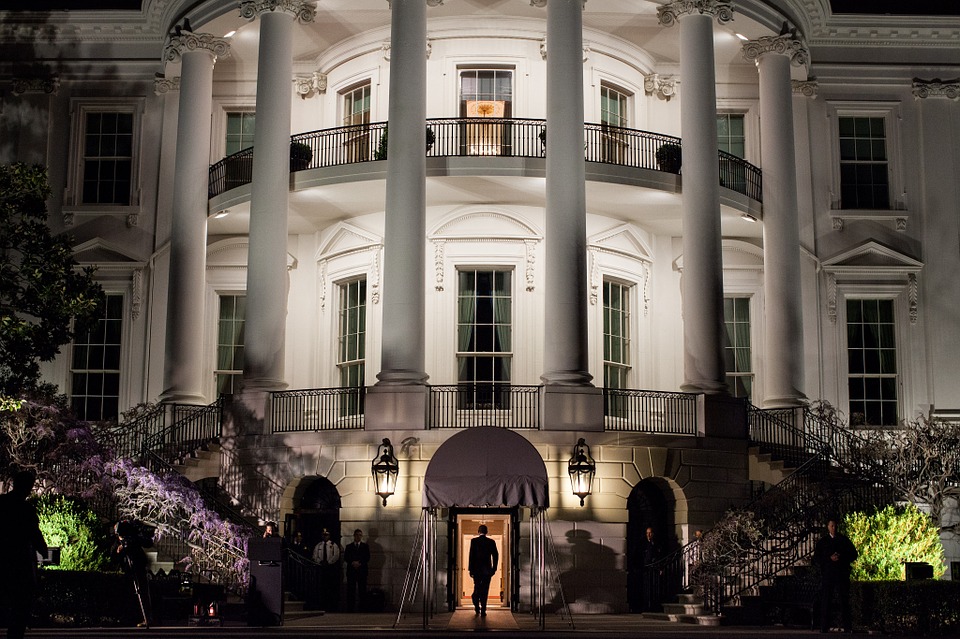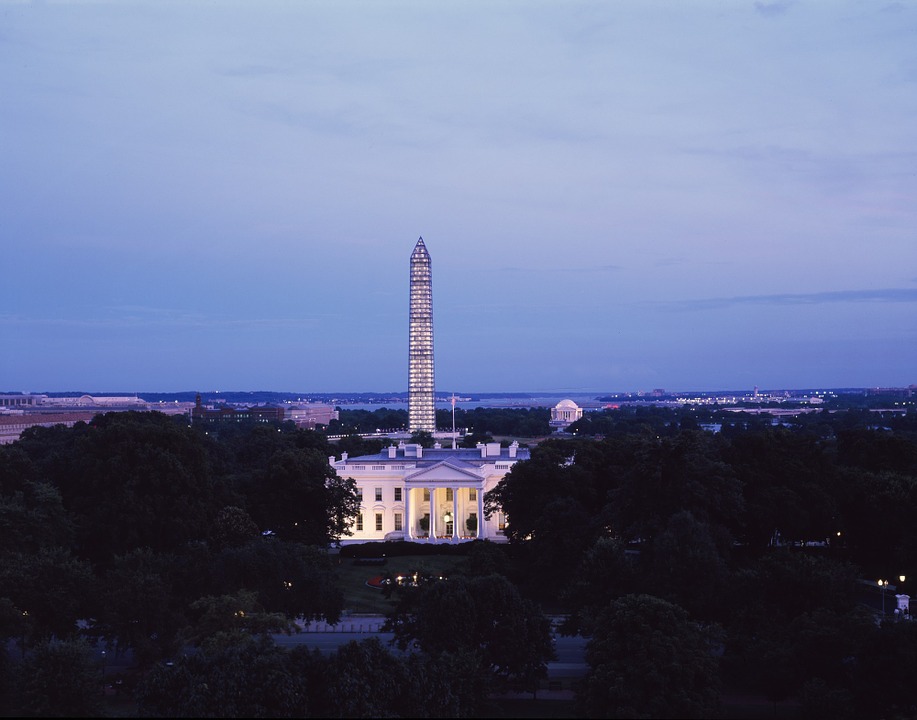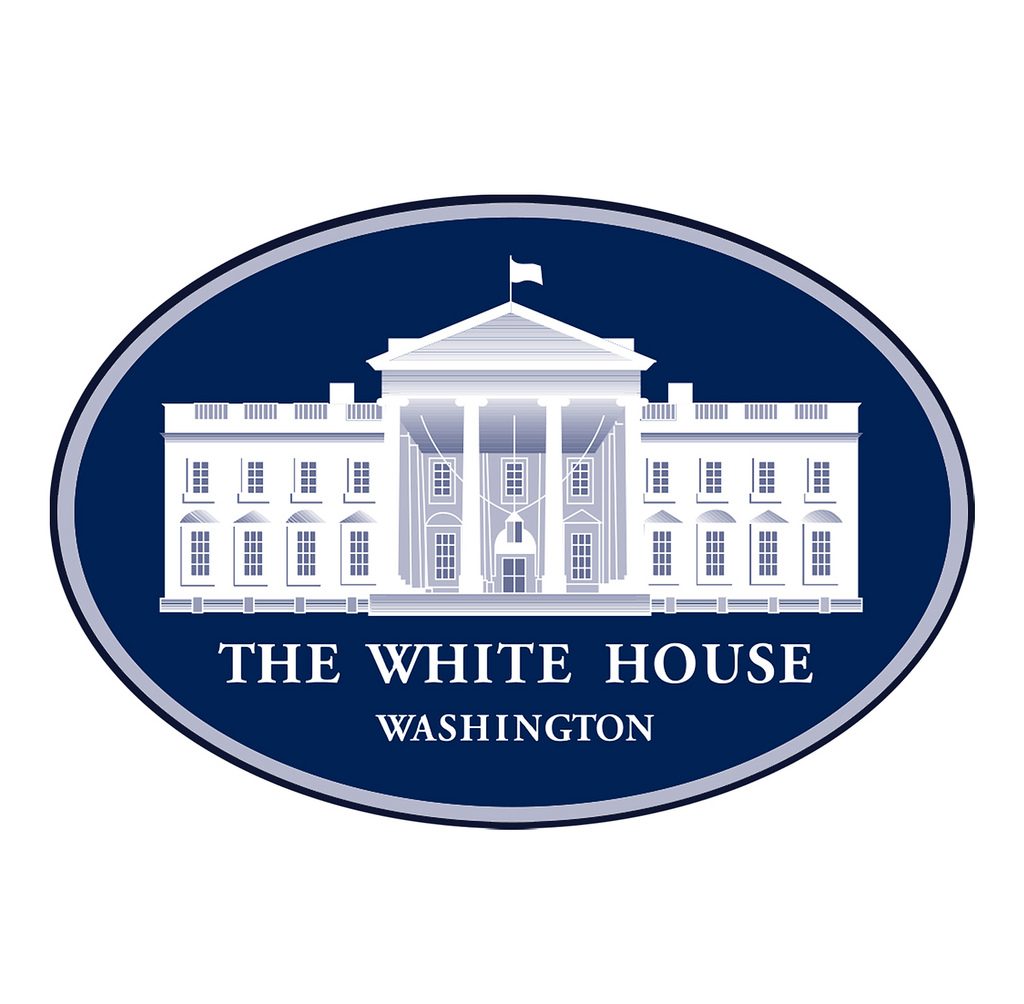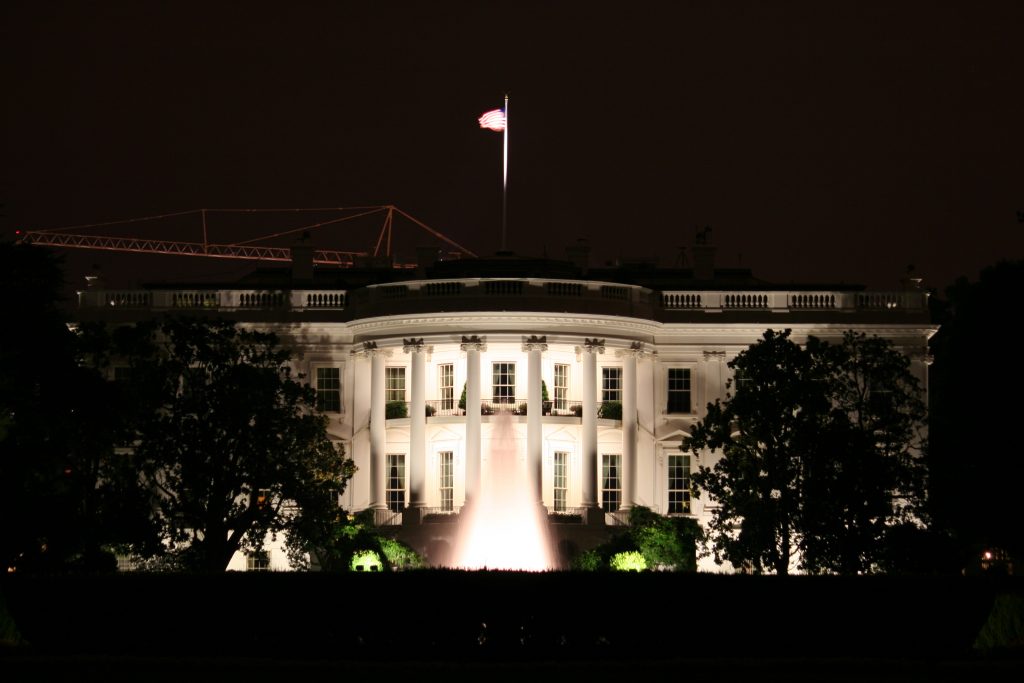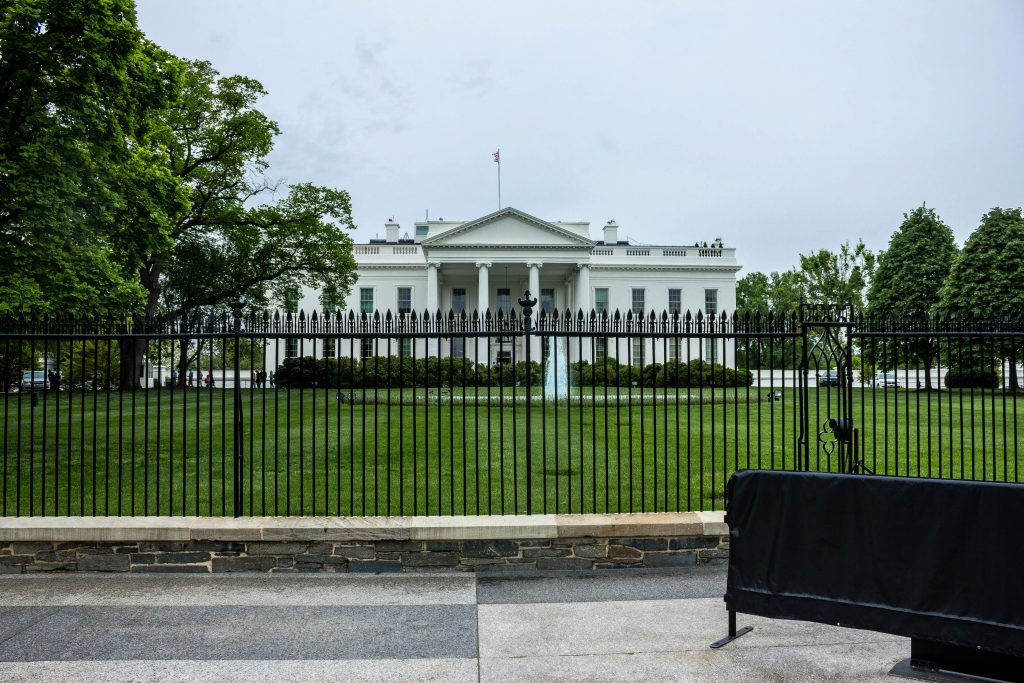White House
Introduction
The White House is the official residence and primary workplace of the President of the United States.
The White House has also been referred to as the “President’s Palace”, the “President’s House”, and the “Executive Mansion”. It was President Theodore Roosevelt who officially gave the White House its current name in 1901.
Like its inhabitants throughout history, the house at 1600 Pennsylvania Ave, Washington DC, has witnessed conflict, controversy, and astonishing transformations. The elegant porticoed mansion we see today is quite different from the austere Georgian-style house designed in 1800 by Irish architect James Hoban, under the presidency of George Washington.
Open to the public for free, the White House reflects the nation’s history through the various collections and characters that each of its residents has left on its walls, serving as a global symbol of the American Nation.
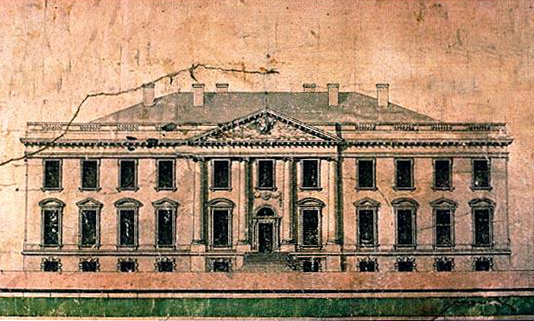
Construction began on October 13, 1792, when the cornerstone was laid, and although Washington never lived in the presidential house, he supervised its construction. Most of the work was done by African Americans, some free, others enslaved.
In 1800, when the house was almost finished, the second president of the United States, John Adams, and his wife Abigail moved into it. 12 years after its construction, the War of 1812 broke out. The President’s House was destroyed by fire under the invasion of the British army. James Hoban rebuilt it according to the original design, but this time the sandstone walls were painted white.
The next significant renovation in the White House took place in 1824 under the mandate of Thomas Jefferson, who designated Benjamin Henry Latrobe as the “Supervisor of Public Buildings” of the United States.
Some of its occupants made more restorations, others less, but over the years, each president of the US has added some of their own personal touches to the house.
Location
The presidential mansion is located at 1600 Pennsylvania Avenue NW, in the District of Columbia, Washington DC., the capital of the United States, close to other government buildings like the Capitol and the Supreme Court.
The District of Columbia is located between the states of Virginia and Maryland, along the banks of the Potomac River. The U.S. Constitution has provided for it as a federal district under the exclusive jurisdiction of Congress, so it is not part of any state.
The name Columbia refers to Christopher Columbus, and Washington was in honor of the first president of the United States, George Washington.
Concept
The residence of the president of the United States is a large neoclassical federal-style mansion, with details echoing Greek classical architecture.
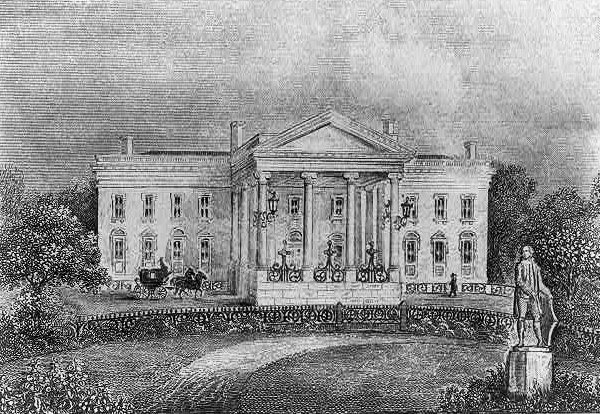
The initial plans for the construction of the Presidential Palace were made by the engineer and artist Pierre Charles L’Enfant, who worked with George Washington on the design of a capital city for the new nation. L’Enfant envisioned a majestic house roughly four times the size of the current White House.
At the suggestion of George Washington, the Irish-born architect James Hoban traveled to the federal capital and submitted a project. Eight other architects also presented designs, but Hoban won. The “White House”, proposed by Hoban, was a refined Georgian-style mansion, in the style of Palladio. It would have three floors and more than 100 rooms. Many historians believe that James Hoban’s design was based on his design for the Leinster House (1748) in Dublin, Ireland, excluding the north and south porticoes, which is currently the seat of the Irish parliament.
Construction
The construction of a mansion for the president’s family and his staff was approved when Congress established the District of Columbia as the permanent capital of the United States on July 16, 1790.
President George Washington assisted in selecting the site, alongside city planner Pierre L’Enfant, whose project for the White House, as we saw earlier, was eventually discarded in favor or Hoban’s.
Planning
The architect was chosen in a contest that received several proposals and was won by James Hoban. Hoban was persuaded to submit a design by Washington himself, who was the judge, and of course selected it.
The building designed by Hoban was based on the first two floors of the Leinster House he had already built in Dublin, now the headquarters of the Irish Parliament.
Construction
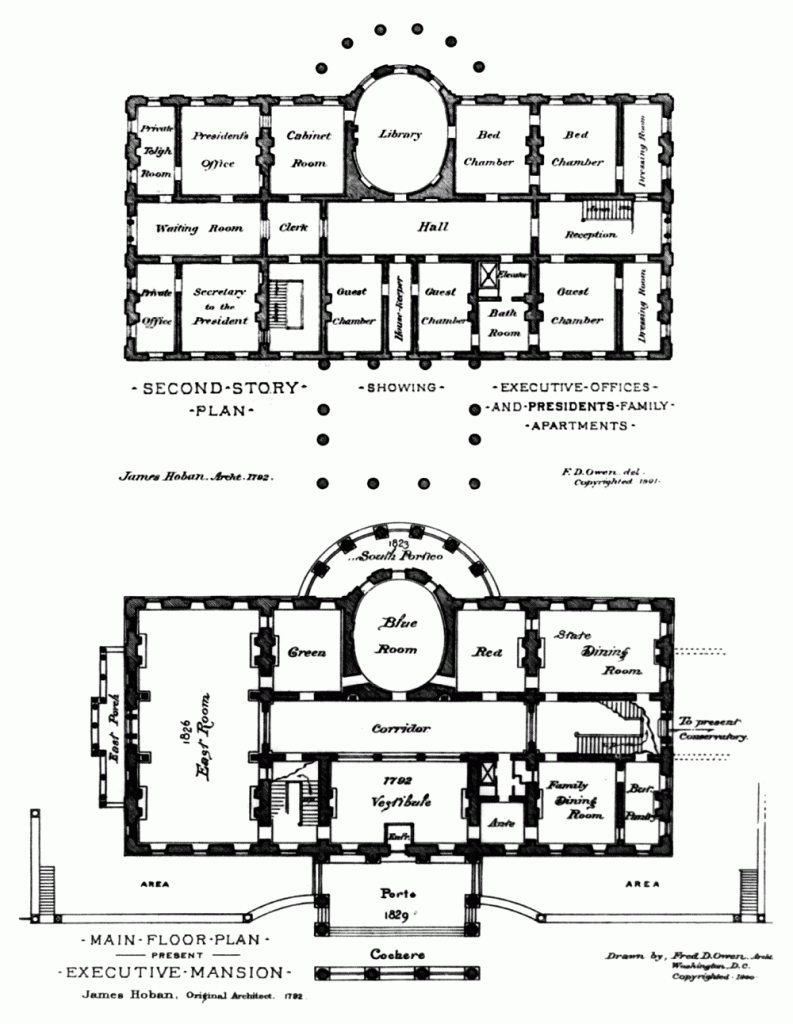
On October 13, 1792, George Washington laid the cornerstone of the building that would become a large neoclassical federal-style mansion, with details echoing classical Greek architecture.
During the 8 years of its construction, $232,372 was spent, approximately equivalent to $7.5 million in 2023 dollars.
Scottish masons were brought in to perform the stonework, as the mansion, unlike the common practice of the time, would be covered with sandstone instead of red brick. However, they did not know how to seal the porous stone and turned to a thick lime mortar that sealed it as if it were glue. This process erased the stone’s gray tone, which was replaced by the lime’s white color. Thus, from its early days, the president’s house was white, quickly earning the nickname “White House.”
The house was considerably smaller than the grand palace originally designed by L’Enfant, nevertheless, when completed, the president’s house was the largest residence in the United States and remained so until the 1860s.
Relocation and Completion
1800
When the second president of the United States John Adams, moved to the Presidential House on November 1, 1800, it was far from finished. Adams and his family occupied the second floor. The basement, which is now the ground floor, was reserved for all the service staff, cooks, laundry, and other cleaning rooms.
The former housekeeper’s room, with its built-in closets, is now the Diplomatic Reception Room. At that time, the Public Audience Room (East Room) was not finished and remained unfinished for years. The grand staircase at the north end of what is now the State Dining Room and some of the second-floor rooms were only used for storage.
1801 – 1809
The second president to occupy the White House was Thomas Jefferson, who moved in March 1801, with the residence still unfinished.
One of the first actions by its new occupant was to build full bathrooms on the top floor to replace the outdoor toilet. He created a museum in the entrance hall about wildlife with stuffed animals and indigenous artifacts. He placed his private secretary at the south end of the unfinished East Room, turned the Dining Room into a cabinet room, and built pavilions on the east and west sides for servants and stables. An arch he had built on the east side, marking the entrance to the guest wing, collapsed, but was later rebuilt with a different design and survived until 1859.
1814-1817
During the War of 1812, much of the city of Washington was burned by the British army. Only the White House’s outer walls remained standing.
Despite architect Latrobe’s suggestions to rebuild it with a new design, its new occupant, President James Madison, decided to restore it and return it to its original appearance, under the supervision of the also original architect, James Hoban.
With a few modifications, the restoration was completed in 1817, under the mandate of President James Monroe, who decorated it with a more modern flair.
1824 – 1830
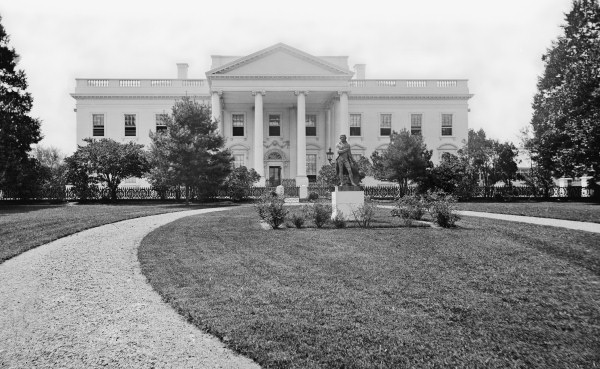
The south and north porticoes of the building were added in 1824 and 1829, respectively, while John Quincy Adams introduced the residence’s first flower garden. Subsequent administrations continued to revise and reinforce the interior through Congressional allocations. The Fillmores added a library in the second-floor oval room, while the Arthurs hired the famous decorator Louis Tiffany to decorate the east area dining rooms.
1866 – 1872
After the San Juan Border Dispute and troop withdrawal, President Johnson’s daughter redecorated the residence with bold geometric designs. Large glass greenhouses were built on both sides of the mansion, providing flowers and plants of all kinds, as well as a pleasant place to talk or read a book.
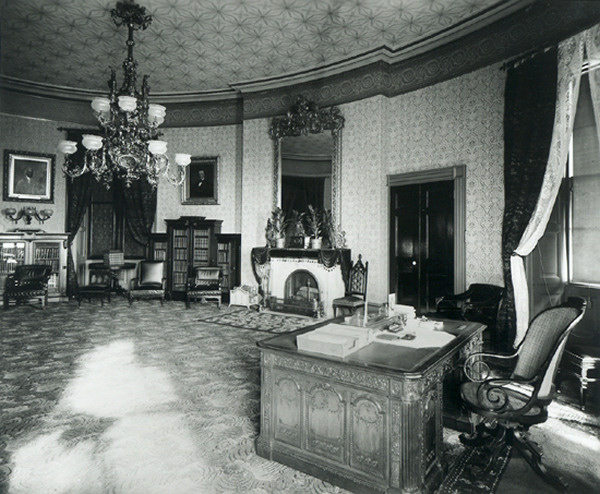
1873-1927
From 1873 to 1927, the White House received numerous architectural and decorative contributions.
Gas lamps were replaced in 1891 by electric lights. In 1902,
Theodore Roosevelt removed the Victorian decor accumulated over the past 30 years and returned to its federal roots with some Georgian elements. The first “west and east wing” were built, and the staff was relocated.
In 1927, the original wooden beams on the third floor were replaced with steel beams.
1948-1952
In 1948, President Harry S Truman added a hotly debated balcony to the South Portico, on the second floor. Not long after this construction, it was discovered that the main body of the residence was structurally unstable. The structure was emptied and rebuilt using concrete and steel beams to replace the original wooden beams. Bathrooms were added to each room, and the grand staircase was opened to the Entrance Hall instead of the Cross Hall.
1961-1963
The Kennedys renovated the White House’s decor and furnishings once again. The first lady established the White House Historical Association to help raise awareness of its heritage and had it declared a Museum to help preserve it. Mrs. Kennedy also transformed the old Prince of Wales suite into a private dining room, and the Family Kitchen became the Primary Kitchen.
Maintenance
Since the 1960s, architectural and decorative changes made by different administrations inside have been limited, as the White House is treated like a living museum. In the early 1990s, the exterior of the White House was restored; about 40 layers of paint were removed, and the sandstone exterior was repaired and repainted. In
1993, the White House embarked on an extensive “greening” project aimed at reducing energy consumption.
Solar Panels
As a matter of fact, Jimmy Carter installed solar panels on the roof of the West Wing, above the Cabinet Room in 1977, way before this technology became mainstream. During the Reagan era though, they were removed due to leakage problems.
In 2002, they were reinstalled during the second Bush administration, along with new solar collector systems for the pool.
Spaces
The current White House covers an area of approximately 5,109.67 square meters, spread over 6 floors that house 132 rooms and 35 bathrooms, in addition to other facilities. The White House kitchen can serve dinner to a maximum of 140 guests and hors d’oeuvres to over 1,000.
Residence
Basements
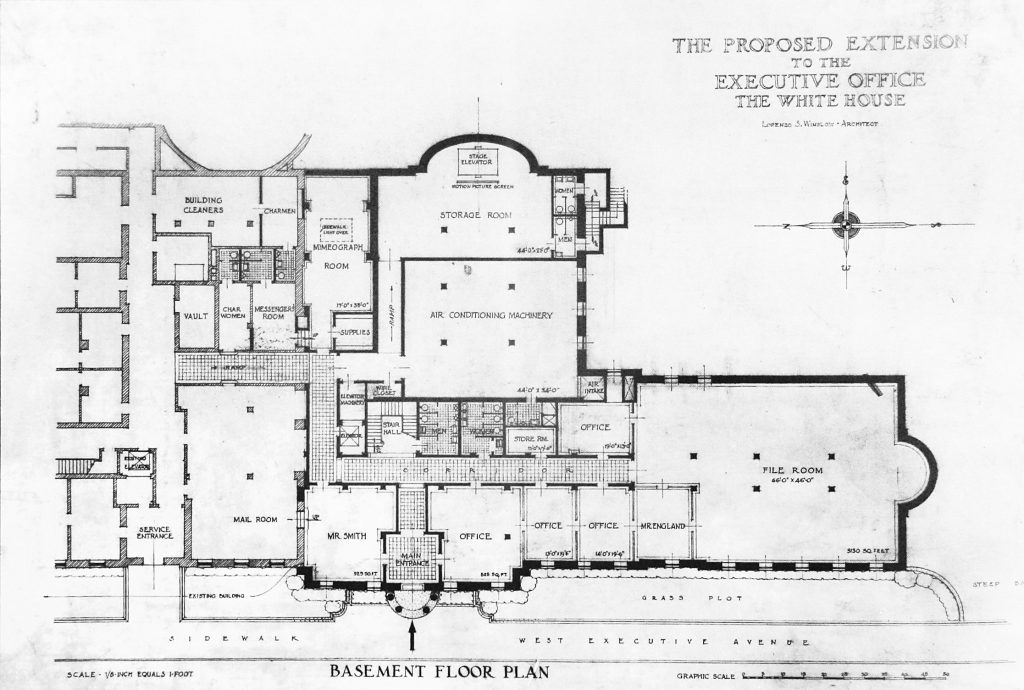
The basements of the White House were not part of the original structure. They were excavated in 1949 during the renovation undertaken by Truman. Most of the machinery that serves the residence is located here.
There is a full sub-basement and a mezzanine basement (partial floor). Some spaces, such as the air conditioning room, the water purification plant, the control room, and the electrical switching room, are two stories high.
Ground Floor
The current ground floor of the residence connects to the first floor of the East and West Wings, a connection made easier by the building’s position on a small hill. The ground floor has 10 rooms, a main corridor, and 6 toilets.
First Floor – State Floor
The first floor of the White House is often called the “State Floor” because this is where formal state receptions are held. This floor is on the same level as the second floor of the West Wing and the East Wing, as the residence sits on the upper floor.
This floor has 8 rooms, 1 main corridor, 1 entrance. Except for the entrance hall, which ceiling is 5.80 meters high, and the east room at 6.10 meters, the rest of the ceilings rise to 5.50 meters.
Mezzanine of the First Floor
Above the pantry, the Usher’s office, and the lobby elevator on the first floor is a mezzanine that includes some small closets, another pantry for pastries, and the clock room.
Second Floor – Family Residence
This floor, with 16 rooms, a main corridor, and 6 bathrooms, is the primary family residence. It contains the president’s and his family’s bedrooms, a private living room, as well as some rooms for close guests. Accommodations for official guests are located in Blair House, across from the residence. The rooms of the family residence have a height of 3.66 meters.
Third Floor
The third floor of the White House is where the family relaxes. It includes a billiards room, a workout room, a solarium, and a music room added by the Clinton family.
West Wing
1919
From the beginning, it was recognized that the mansion lacked the space needed for all the functions a head of state must perform. This led the mansion’s second occupant, Thomas Jefferson, to propose expanding it by constructing two extensions to the east and west to connect the president’s house with adjacent office buildings.
President Jefferson’s design concepts partially survive through the galleries that connect the White House residence with the east and west wings. The galleries are used for domestic purposes and do not provide additional office space. Conservatories were built on the residence’s west side in the late 19th century.
A few weeks after the stock market crash in 1929, the West Wing was seriously damaged by a fire resulting from an electrical fault.
First Floor
The first floor of the West Wing includes the Oval Office and the offices of those closest to the president. It also houses meeting rooms and offices for the White House Press Corps.
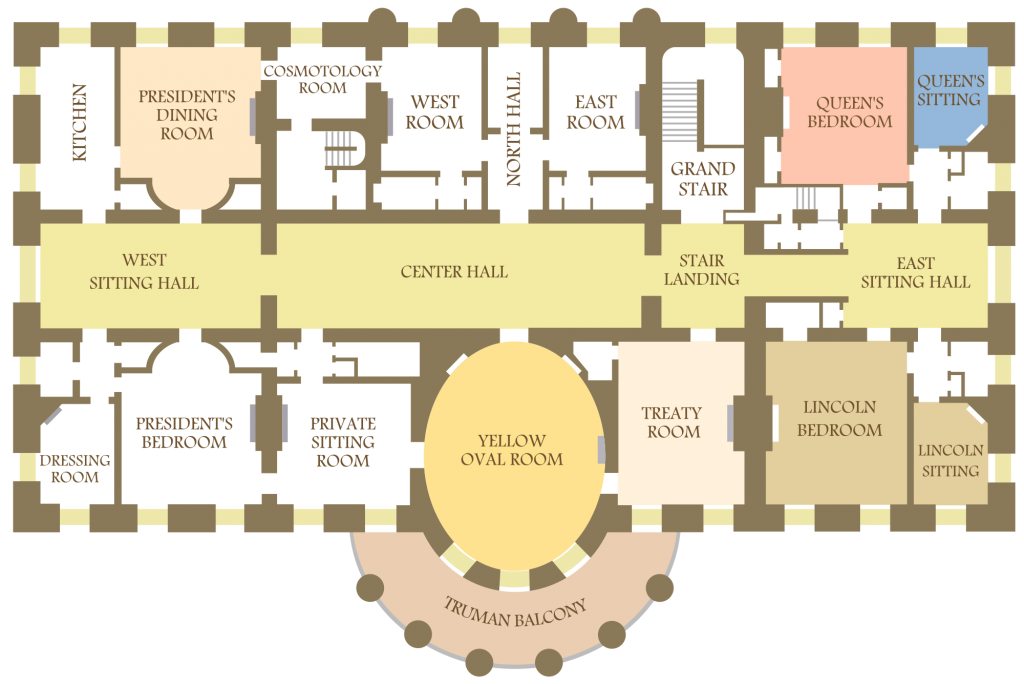
Second Floor
This floor accommodates the offices of staff serving the president, assistants, speechwriters, and legal advisors. This floor was established in 1934 during Franklin Roosevelt’s tenure.
East Wing
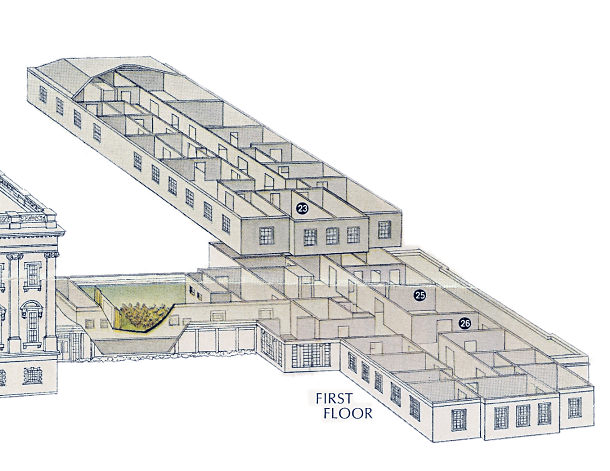
First Floor
The first floor of the East Wing contains the lobby, which welcomes the public visiting the White House. To the east we find the Garden Room, the White House family theater, and the entrance for visitors to the White House’s ground floor.
Second Floor
The second floor is occupied by support staff, including the first lady’s office, the social secretary, the White House calligrapher, and other formal correspondence staff.
Materials
The first presidential palace was a stately yet simple house made of pale gray sandstone, later covered with white lime. The structure was originally masonry with wooden beams.
Over the years, these have been replaced by concrete walls and steel beams. The pavilions, porticos, or columns supporting the entrance roof were added later.
The White House requires 2,170 liters of paint to cover its exterior surface. Inside, there are 412 doors, 147 windows, 28 fireplaces, 8 staircases, and 3 elevators.
